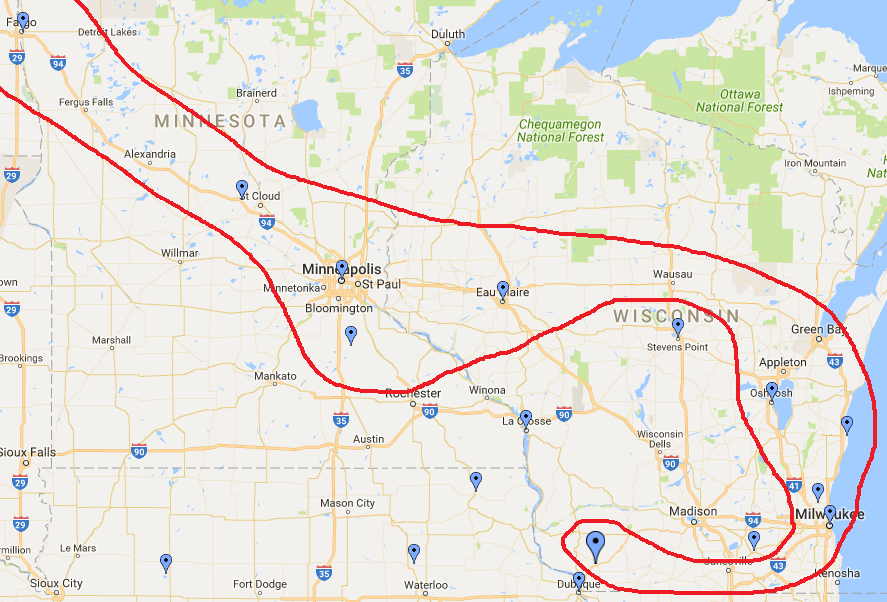Anchoring Bias and the Regional Alignment
Anchoring is one form of cognitive bias in which the first piece of information offered is given more weight than it deserves. Examples in everyday life include the first offer in a negotiation or when an item is listed for sale at a certain price. In a negotiation, that first amount offered tends to “anchor” the subsequent offers around that point, even if the number does not adequately reflect the value of the transaction. Regarding item prices, seeing that an item is “50% off” can cause the shopper to believe that he or she is getting a great deal because the anchor price is twice as high as the current price, even if the original price has no connection to the item’s actual value.
The current regional alignment, and subsequent attempts to change it, have demonstrated an anchoring bias. The current alignment, while incredibly flawed, has been treated as if it has value simply because it came first. Anytime someone refers to “moving” a team from one region to another, that gives a bit more legitimacy to a system that is inherently unfair. The current alignment is either the result of a mistake or bias, depending on your point of view, and it ought not be treated as worthwhile just because it was the first regional alignment used.
In order for the wrestling and championships committees to create and approve a fair system of six regions, they need to throw away the current system and start from scratch. Any effort that starts with the current alignment as a reference will propagate its unfairness into the next alignment. Throw the old system away, come up with a fair and reasonable set of guidelines for forming regions, and make sure that there is as much transparency as possible. As we head into yet another season with the same regional alignment as the past four, it is worth noting what the Championships Committee decided was appropriate for the 2016-2017 season.
- One region has 11 teams while others have 19, even though teams have moved in the past to keep regions at 18 or less.
- King’s College and Wilkes University are in different regions. The competition sites for the two schools are less than one mile apart.
- If you draw a contiguous line around the West Region, it looks like this:

Regional Alignment – How We Got Here
Ice Hour Episodes 12 | 13 – both with discussion of regional alignment
2016-2017 Regional Alignment as determined by the NCAA Championships Committee
d3wrestle.com Regional Alignment Proposal
Four Year Totals 2013-2016 (since the regional system was in place)
| Region | All-Americans | % of total AA | Team Points | % of total Points |
|---|---|---|---|---|
| Central | 67 | 20.94 | 895 | 20.96 |
| Midwest | 65 | 20.31 | 888 | 20.80 |
| Mideast | 56 | 17.5 | 727.5 | 17.04 |
| East | 52 | 16.25 | 684 | 16.02 |
| Northeast | 49 | 15.31 | 612 | 14.33 |
| West | 31 | 9.69 | 463 | 10.84 |
